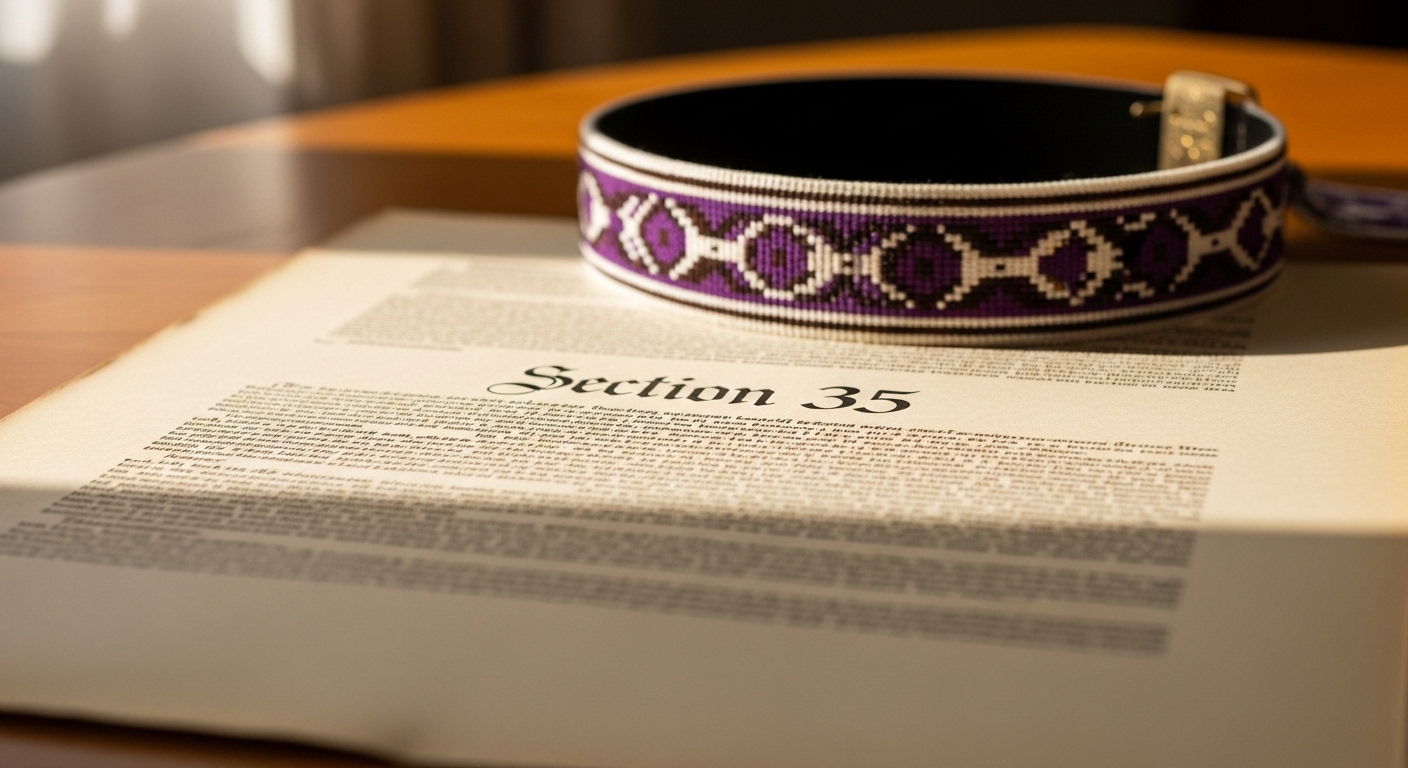Part I: The Foundation – Text, Context, and Principles
The Thirty-Four Words That Reshaped a Nation
In 1982, with the patriation of the Canadian Constitution, a new section was added that would fundamentally alter the legal and political landscape of Crown-Indigenous relations in Canada. Section 35 of the Constitution Act, 1982 recognizes and affirms the rights of Aboriginal peoples, transforming them from common law rights into constitutionally protected rights shielded from arbitrary government interference. Yet, the sparse language of this section set the stage for decades of litigation and political struggle over its true meaning and scope.
The Constitutional Text
The full text of Section 35 reads:
35. (1) The existing aboriginal and treaty rights of the aboriginal peoples of Canada are hereby recognized and affirmed.
(2) In this Act, “aboriginal peoples of Canada” includes the Indian, Inuit and Métis peoples of Canada.
(3) For greater certainty, in subsection (1) “treaty rights” includes rights that now exist by way of land claims agreements or may be so acquired.
(4) Notwithstanding any other provision of this Act, the aboriginal and treaty rights referred to in subsection (1) are guaranteed equally to male and female persons.
The deliberate lack of definition in the text effectively deferred the difficult task of defining the substance of these rights to the judiciary, setting the stage for the next forty years of legal battles, as detailed in the government’s own Section 35 “Pedia”.
The Fight for Recognition: A Hard-Won Victory
Section 35 was not a benevolent grant from the Crown; it was the result of a determined campaign by First Nations, Inuit, and Métis leaders who refused to be excluded from the nation’s new constitutional moment. Indigenous organizations mobilized, with impactful actions like the “Constitution Express” bringing approximately 1,000 people to Ottawa to demand inclusion in the negotiations. These concerted efforts ultimately succeeded in late 1981.
Part II: The Judicial Crucible – Defining the Rights
The ambiguous text of Section 35 left the monumental task of giving it substance to the courts. Over the next four decades, a series of landmark cases heard by the Supreme Court of Canada would slowly and contentiously begin to fill the “empty box,” defining the scope of Aboriginal rights and title.
Defining Aboriginal Rights: The Sparrow and Van der Peet Tests
The first major legal battle was R. v. Sparrow (1990). The Supreme Court established that “existing” rights in Section 35 are rights that were not clearly extinguished before 1982. It ruled that these rights are not absolute and can be infringed by the government, but only if the infringement is justified. This created the famous “Sparrow Test.”
Six years later, in R. v. Van der Peet (1996), the Court established a much more restrictive test for identifying an Aboriginal right. The Court held that to be protected, an activity must be an element of a practice, custom, or tradition “integral to the distinctive culture” of the group claiming the right, with a focus on practices that existed prior to European contact. This became a major point of contention, with critics arguing it “freezes” Indigenous rights in the past.
Defining Aboriginal Title: The Tsilhqot’in Decision
Parallel to cases on rights, a second line of jurisprudence defined Aboriginal title to the land itself. The most significant ruling was Tsilhqot’in Nation v. British Columbia (2014). In a historic ruling, the Supreme Court granted the Tsilhqot’in Nation a declaration of Aboriginal title, marking the first time a court had done so in Canada. The decision confirmed that on lands with proven Aboriginal title, the government must obtain the consent of the title-holding First Nation before approving developments.
The Procedural Right: The Duty to Consult
In Haida Nation v. British Columbia (2004), the Supreme Court established that the Crown has a constitutional “duty to consult and accommodate” Indigenous peoples whenever it contemplates conduct that might adversely affect their asserted but unproven rights. This duty arises from the Honour of the Crown and exists on a spectrum, with the level of consultation required depending on the strength of the claim and the potential impact of the government’s action.
Part III: Section 35 in the Modern Era
The jurisprudence of Section 35 continues to evolve, grappling with complex issues of governance and reconciliation.
The Guiding Principles: Honour and Reconciliation
The Supreme Court has repeatedly stated that the ultimate purpose of Section 35 is to advance the goal of **reconciliation** between Indigenous peoples and the Crown. This process is guided by the **Honour of the Crown**, a constitutional principle that requires federal and provincial governments to act with honour, integrity, and fairness in all of their dealings with Indigenous peoples, as summarized by The Canadian Encyclopedia.
The Path Forward: UNDRIP and Legislative Action
The interpretation of Section 35 is now heavily influenced by the **United Nations Declaration on the Rights of Indigenous Peoples (UNDRIP)**. In 2021, Canada passed legislation committing the federal government to align its laws with the Declaration. A recent example of “legislative reconciliation” was the 2024 Supreme Court reference case upholding the federal Act respecting First Nations, Inuit and Métis children, youth and families (formerly Bill C-92), which affirms that the inherent right of self-government includes jurisdiction over child and family services.
Conclusion: The Enduring Legacy of Section 35
More than forty years after its inclusion in the Constitution, Section 35 stands as the legal cornerstone of modern Indigenous rights in Canada. It has provided the foundation for landmark court victories and created powerful legal duties that have forced the Crown to the negotiating table. At the same time, its interpretation by the courts has faced profound criticism. The enduring legacy of Section 35 is that it constitutionalized a relationship and a struggle. It did not end the conversation about the place of Indigenous peoples within Canada; it ensured that the conversation would continue, with the force of law, for generations to come, as outlined in primers by legal experts like First Peoples Law.

